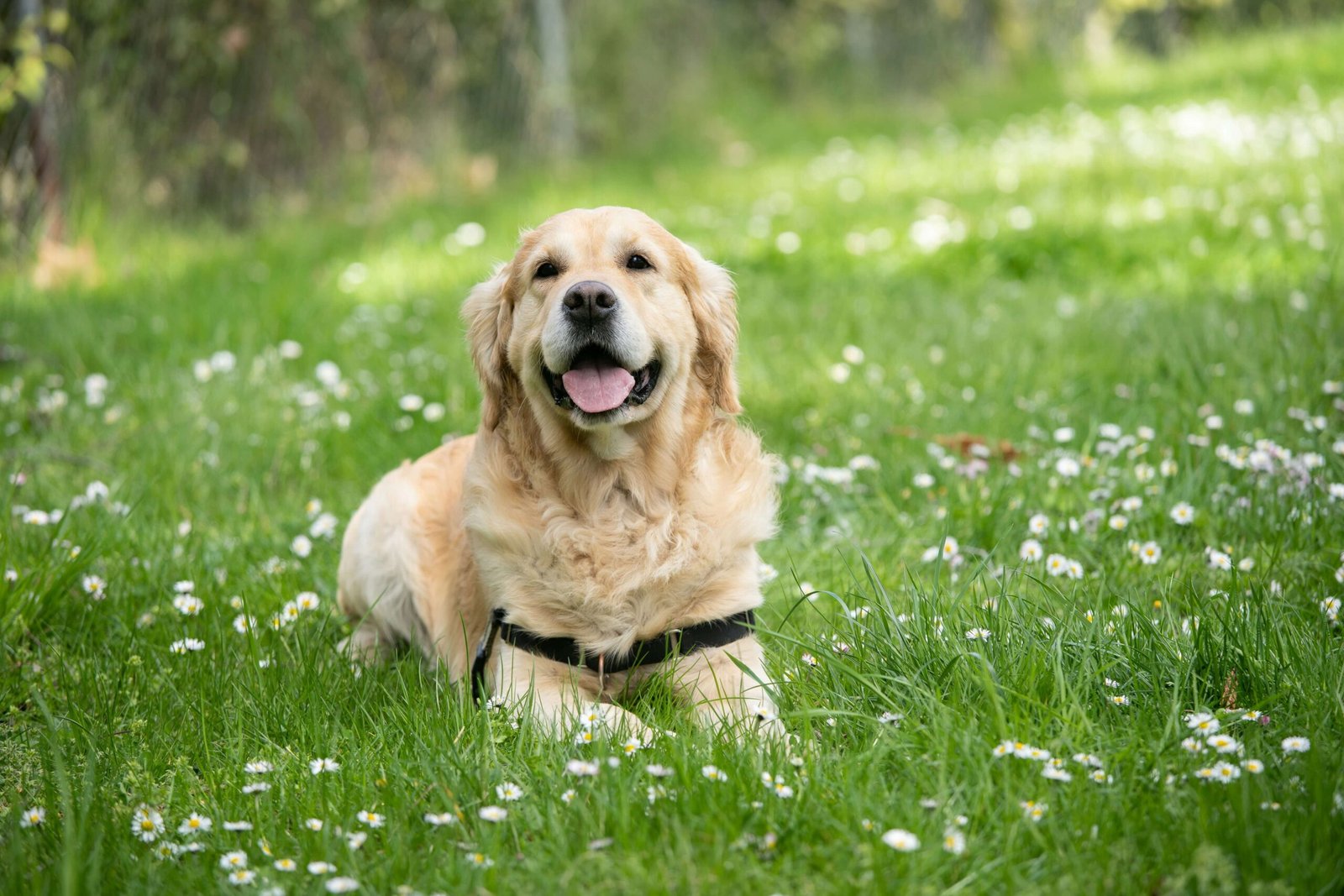Why Gluten-Free Dog Food is a Game-Changer for Your Pup
If your furry friend suffers from allergies, digestive issues, or simply needs a healthier diet, gluten-free dog food might be the solution you’ve been looking for. Many dogs thrive on grain-free and gluten-free diets, which can improve their overall health and energy levels. Whether your dog has a sensitivity to gluten or you’re just exploring better nutritional options, choosing the right gluten-free dog food is essential. In this blog post, we’ll dive into why gluten-free diets are beneficial, how to choose the best option, and highlight some top picks that will keep your pup wagging its tail.
My Top Picks for the Best Gluten-Free Dog Foods
After extensive research and testing, I’ve curated a list of my favorite gluten-free dog foods that cater to different breeds, sizes, and dietary requirements. These products are not only nutritious but also delicious enough to satisfy even the pickiest eaters:
Amazon Brand - Wag Dry Dog Food Salmon & Sweet Potato
Price: $52.99
Rating: ⭐⭐⭐⭐⭐ (4.4/5)
Features: High-quality salmon as the first ingredient, sweet potato base, no artificial preservatives
Best For: Dogs with sensitive stomachs, small to medium breeds
Designed with real salmon and nutrient-rich sweet potatoes, this gluten-free dog food offers a delicious and digestible meal for your pup. Packed with essential vitamins and minerals, it supports healthy skin, coat, and energy levels. The absence of grains and artificial additives makes it perfect for dogs with dietary sensitivities. Click “Buy on Amazon” to nourish your dog with wholesome goodness!
Merrick Backcountry Grain Free
Price: $89.99
Rating: ⭐⭐⭐⭐⭐ (4.2/5)
Features: Ancient grain-free recipe, deboned beef as the first ingredient, probiotics for digestion
Best For: Active dogs, all breeds
Inspired by the wild, Merrick Backcountry Grain Free provides a protein-packed diet featuring deboned beef and antioxidant-rich fruits and vegetables. Enhanced with probiotics for optimal digestion, this formula promotes vitality and overall well-being. Ideal for active dogs who need sustained energy throughout the day. Click “Buy on Amazon” to fuel your dog’s adventurous spirit!
Merrick Lil’ Plates Premium Grain Free
Price: $88.99
Rating: ⭐⭐⭐⭐⭐ (4.6/5)
Features: Small kibble size, chicken as the first ingredient, omega-rich ingredients
Best For: Small breed dogs, puppies
Tailored specifically for small breed dogs, Merrick Lil’ Plates Premium Grain Free boasts a smaller kibble size that’s easy to chew. With real chicken as the primary ingredient, it delivers high-quality protein along with omegas for healthy skin and coat. This gluten-free option ensures your little one gets the nutrition they need in every bite. Click “Buy on Amazon” to spoil your tiny companion with gourmet flavor!
Nature’s Recipe Grain Free Salmon
Price: $49.99
Rating: ⭐⭐⭐⭐⭐ (4.5/5)
Features: Real salmon as the main ingredient, omega-3 fatty acids, no corn, wheat, or soy
Best For: Dogs with food allergies, all life stages
Nature’s Recipe Grain Free Salmon formula is crafted with real salmon and enriched with omega-3 fatty acids to promote heart health and shiny coats. Free from common allergens like corn, wheat, and soy, it’s gentle on sensitive stomachs while delivering balanced nutrition. Perfect for dogs at any stage of life. Click “Buy on Amazon” to treat your dog to nature-inspired nutrition!
Instinct Raw Boost
Price: $89.99
Rating: ⭐⭐⭐⭐⭐ (4.4/5)
Features: Freeze-dried raw boosts mixed with dry kibble, cage-free chicken, non-GMO ingredients
Best For: Dogs needing premium nutrition, picky eaters
Instinct Raw Boost combines the convenience of dry kibble with the nutritional benefits of freeze-dried raw bites. Featuring cage-free chicken and non-GMO ingredients, this gluten-free formula enhances taste and nutrition in every meal. Loved by even the pickiest eaters, it’s a top choice for pet parents seeking superior quality. Click “Buy on Amazon” to elevate your dog’s dining experience!
Expert Opinion: Is Gluten-Free Dog Food Necessary?
“Gluten-free dog food can be beneficial for dogs with diagnosed gluten intolerance or specific allergies. However, true gluten allergies in dogs are rare. The key is a balanced diet with high-quality proteins and essential nutrients. Owners should focus on their dog’s individual needs rather than following trends.”
— Dr. Martina Weber, Veterinarian & Canine Nutrition Specialist
Check this guide 👉 5 Best Grain-Free Dog Foods for Ultimate Health!
Check this guide 👉 Top 5 Best Turkey Dog Food Options for Ultimate Nutrition!
Check this guide 👉 Top 5 Premium Hydrolyzed Dog Foods for Ultimate Health!

Key Benefits of Gluten-Free Dog Food
Gluten-free dog food offers numerous advantages for pets with specific dietary needs. Here’s why it could make a difference in your dog’s life:
- Helps reduce symptoms of food sensitivities such as itching, skin irritation, and digestive discomfort.
- Provides high-quality protein sources like salmon, chicken, and lamb without grains like wheat or barley.
- Promotes healthier digestion by avoiding hard-to-digest ingredients.
- Supports a balanced diet rich in vitamins, minerals, and antioxidants.
- Ideal for dogs with chronic conditions like IBD (Inflammatory Bowel Disease).
By switching to gluten-free dog food, you may notice significant improvements in your pet’s coat, energy levels, and overall well-being.
Factors to Consider When Choosing Gluten-Free Dog Food
When selecting gluten-free dog food, there are several factors to keep in mind to ensure you pick the best option for your pet:
- Protein Source: Look for recipes featuring high-quality proteins like salmon, turkey, or beef.
- Carbohydrates: Opt for alternatives to grains, such as sweet potatoes, peas, or lentils.
- Nutritional Balance: Ensure the food meets AAFCO standards for complete and balanced nutrition.
- Additives: Avoid artificial preservatives, colors, and flavors.
- Price Point: Set a budget but prioritize quality over cost.
Taking these considerations into account will help you find a gluten-free dog food that aligns with your pet’s dietary needs and preferences.
Pros | Cons |
|---|---|
High-quality ingredients promote better health | Can be more expensive than traditional kibble |
Reduces symptoms of food sensitivities | Limited variety compared to grain-inclusive options |
Rich in protein and essential nutrients | May require gradual transition to avoid digestive upset |
Supports healthier skin and coat | Some dogs may not adjust well to new formulas |
Free from common allergens like wheat and barley | Requires careful selection based on individual dietary needs |
Common Mistakes to Avoid When Switching to Gluten-Free Dog Food
Switching your dog’s diet requires care and attention. Here are some common mistakes to steer clear of:
- Sudden Changes: Gradually introduce new food over 7–10 days to prevent stomach upset.
- Ignoring Nutritional Needs: Ensure the new diet meets all your dog’s nutritional requirements.
- Overfeeding: Adjust portion sizes according to your dog’s age, weight, and activity level.
- Not Monitoring Reactions: Keep an eye on your dog’s behavior and digestion after the switch.
- Choosing Based Solely on Price: Prioritize quality over affordability when it comes to your pet’s health.
Avoiding these pitfalls will ensure a smooth transition and long-term benefits for your furry companion.
Tips for Feeding Your Dog Gluten-Free Food
To maximize the benefits of gluten-free dog food, follow these practical tips:
- Read Labels Carefully: Always check ingredient lists to confirm the absence of gluten.
- Consult Your Vet: Discuss dietary changes with your veterinarian to tailor the plan to your dog’s needs.
- Mix It Up: Rotate protein sources occasionally to provide a diverse nutrient profile.
- Monitor Weight: Regularly weigh your dog to ensure they maintain a healthy body condition.
- Stay Consistent: Stick to one formula unless advised otherwise by a professional.
By following these guidelines, you’ll set your dog up for success with their new gluten-free diet.
Additional Considerations for Gluten-Free Dog Food
When selecting the perfect gluten-free dog food, here are a few extra considerations to keep in mind:
- Life Stage Needs: Choose formulas specifically designed for puppies, adults, or seniors to meet their unique nutritional requirements.
- Activity Level: Active dogs may need higher-calorie diets, while less active pets benefit from lower-calorie options to maintain a healthy weight.
- Taste Preferences: Some dogs can be picky eaters, so try different flavors to find what they enjoy most.
- Environmental Impact: Opt for brands that prioritize sustainable sourcing and eco-friendly packaging.
- Customer Reviews: Read reviews from other pet owners to gauge real-world results and satisfaction with the product.
By factoring in these additional elements, you’ll ensure your dog gets the best possible nutrition tailored to their individual needs.
Simple Ways to Enhance Your Dog’s Gluten-Free Diet
To complement your dog’s gluten-free food and provide a well-rounded nutritional experience, consider these tips:
- Add Supplements: Incorporate omega-3 fatty acids or probiotics to support joint health and digestion.
- Offer Fresh Foods: Introduce small portions of cooked vegetables or fruits like carrots or blueberries for added nutrients.
- Hydration Matters: Ensure your dog always has access to fresh water, especially if they’re eating dry kibble.
- Rotate Treats: Use gluten-free treats that align with their diet to reward good behavior without compromising health.
- Monitor Portions: Avoid overfeeding by sticking to recommended serving sizes and adjusting based on your dog’s activity level.
By taking these steps, you’ll create a balanced and enriching dietary plan that keeps your dog happy and healthy.
Frequently Asked Questions About Gluten-Free Dog Food
Is gluten-free dog food suitable for all dogs?
While gluten-free diets benefit dogs with sensitivities, they aren’t necessary for every pet. Consult your vet to determine if it’s right for your dog.
Will my dog like gluten-free food?
Most dogs enjoy gluten-free recipes, especially those with flavorful protein sources like salmon or chicken.
How long does it take to see results?
Improvements in skin, coat, and digestion typically appear within 4–8 weeks of switching to gluten-free food.
Are gluten-free foods more expensive?
Generally yes, but the investment pays off in improved health and reduced vet bills.
Can I mix gluten-free and regular food?
It’s best to avoid mixing to prevent cross-contamination and ensure consistent results.
Nourish Your Dog with the Best Gluten-Free Choices
Feeding your dog gluten-free food is an excellent way to support their health and happiness. By understanding their unique dietary needs and selecting high-quality options, you can ensure they receive the nutrients they need to thrive. Whether you choose salmon-based recipes or raw boosts, the key is consistency and care. So why wait? Start exploring the world of gluten-free dog food today and watch your pup flourish!
Cuterebra Larvae in Cats: Best 7 Expert Tips! – Expert advice on signs, treatment & prevention of this rare but serious feline parasitic infestation.
Cuterebra Larvae in Dogs: Best 7 Expert Tips! – Expert advice on signs, treatment & prevention of this rare but serious parasitic infestation.
Cat Tumor on Paw: Best 7 Expert Tips! – Expert advice on signs, diagnosis, treatment & care for feline paw tumors.
Panacur Side Effects in Dogs: Best 7 Expert Tips! – Safe usage, common reactions & when to call the vet.





